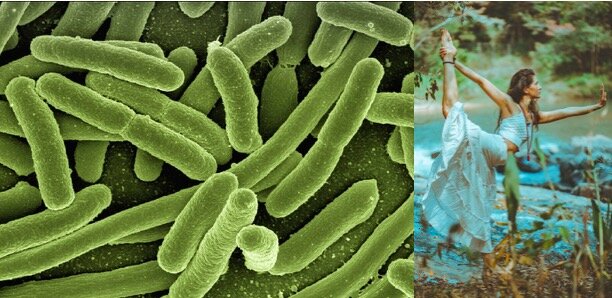@
PathwayMachine Genes direct protein synthesis. That’s pretty much all they do (they have quite dull social lives, and don’t seem to have hobbies or outside interests). Those proteins are built up from amino acids.
The genes comprise large numbers of base-pairs, which are simply guanine matched with cytosine and adenine matched with thymine. The human genome contains around 3.2 billion of these base pairs (the largest we’ve found so far is that of the flowering plant Paris japonica, which has 150 billion base pairs. The marbled lungfish has 133 billion base pairs).
As I said, proteins are built up from amino acids. Each amino acid that is used to build the proteins is specified by three base-pairs (those blocks of three base-pairs are called codons).
Let’s look at cytochrome c (we could use any number of such proteins, but I have a fondness for cytochrome c… I like the alliteration)
The cytochrome c protein is built up from around 100 amino acids.
This means that there are 10E135 possible ways that the amino acids could be arranged… but not all of those arrangements would work, of course.
However, because there’s a high level of redundancy in the construction of cytosine c (and all proteins), a stunning 10E93 variants would still be functional.
So that’s 100,000,000,000, 000,000,000, 000,000,000, 000,000,000, 000,000,000, 000,000,000, 000,000,000, 000,000,000, 000,000,000, 000,000,000 possible ways that DNA could code for functional cytosine c.
Time to make some predictions in accordance with the Theory of Evolution, don’t you think?
1. Because evolution began from a tightly limited range of organisms, only one of those possible functional variants will have been passed down over the last 3.5 billion years.
2. Because of point mutations (among other factors), there should be evidence of extremely slight variation that has crept in over the last 3.5 billion years… after all, even high-fidelity copying systems aren’t perfect (and it would be suspicious if they appeared to be so)
3. That variation should be negligible for species that have comparatively recent common ancestors, and increase between species with more distant common ancestors… while still remaining negligible (The process is remarkably stable, so we wouldn’t expect too many of the 10E93 functional variants to have appeared).
So, what do we find?
How many amino acid differences are there between humans and other species?
To make things interesting, let’s list some species in order of how long it has been since we shared a common ancestor with each species, and then see how many amino acid differences there are between us and that species.
Chimpanzee = 0
Rhesus Monkey = 1
Rabbit = 9
Cow = 10
Pigeon = 12
Bullfrog = 20
Fruit Fly = 24
Wheat Germ = 37
Yeast = 42
Evidence-based simplicity and elegance… the Theory of Evolution






